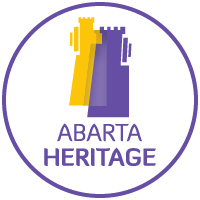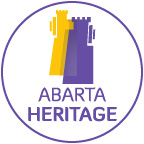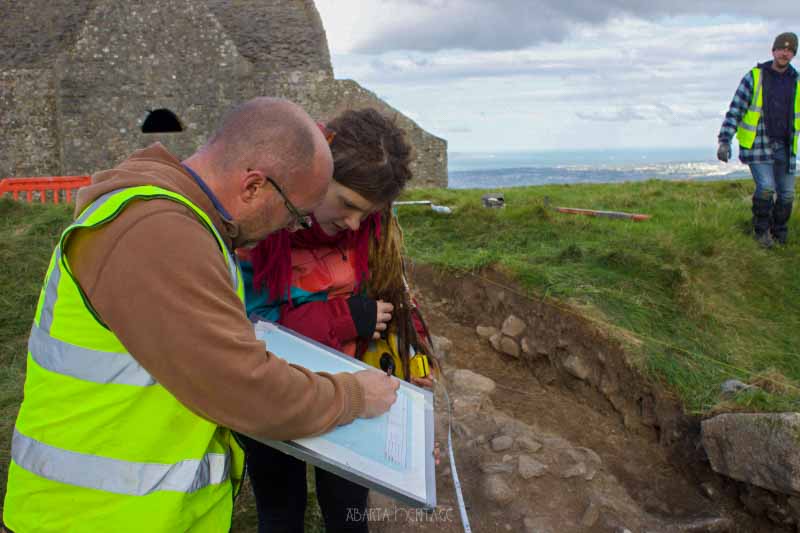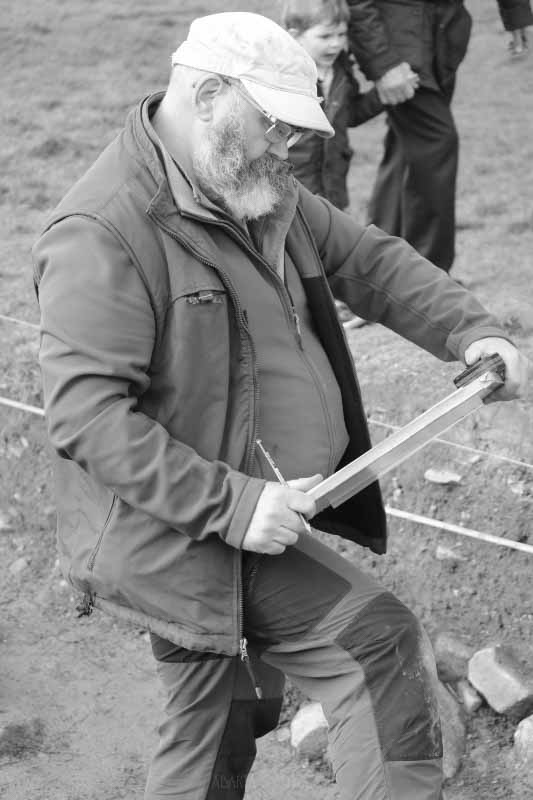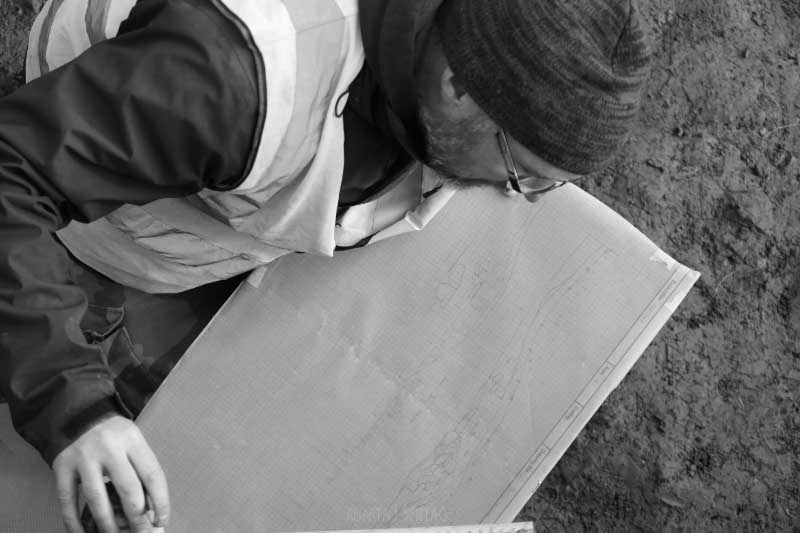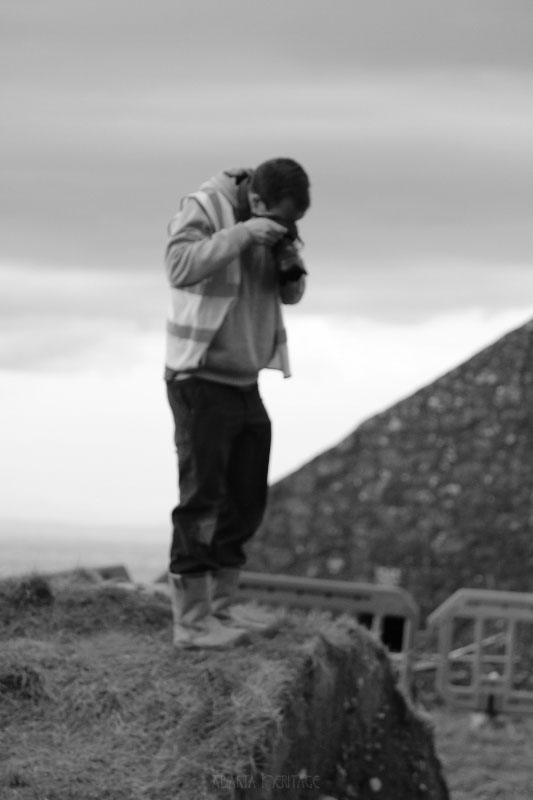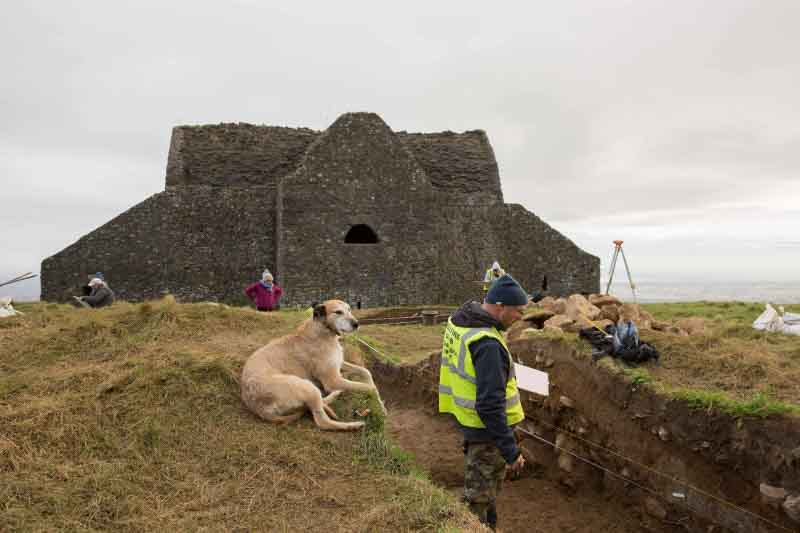Hellfire Club Archaeological Excavation Methods – Creating a Permanent Record
One of the most important aspects of any excavation is to create a clear record and permanent archive. This record should detail the methods and processes along with the information on the individual contexts. This is primarily done on Context Recording Sheets. These pro-forma sheets detail everything about the context, such as what soil type (was it clayey, sandy or silty), soil colour, what inclusions did it have (was charcoal present, was it particularly stony etc), the measurements, what samples were taken (along with their identification numbers) and if any artefacts were found within it. The sheet also records the relationship of this particular context, with the other contexts immediately around it. That helps to create an important basis for the ‘Stratigraphic Report’ that you will find in the free ebook publication.
As well as a written record, scale drawings are regularly made both in plan to show the location of all the contexts and features, and in section, essentially a slice through the monument that shows how the individual layers of soil relate to each other. We also used a GPS Total Station to continuously make an accurate plan of the excavation, and to plot the exact location of where all the artefacts and samples came from.
Photography forms a vital part of the archive. Every single context was photographed and recorded prior to removal. We also regularly used a DJI Phantom 4 drone to photograph the site from the air, giving us multiple perspectives of the archaeology. The excavation generated a photographic archive of thousands of images, and they too will form part of the permanent record that is submitted to the National Monuments Service and National Museum of Ireland. All of this material collates into a detailed archive for any future archaeologist to understand not only the monument itself, but the approaches and techniques we employed as part of this excavation.
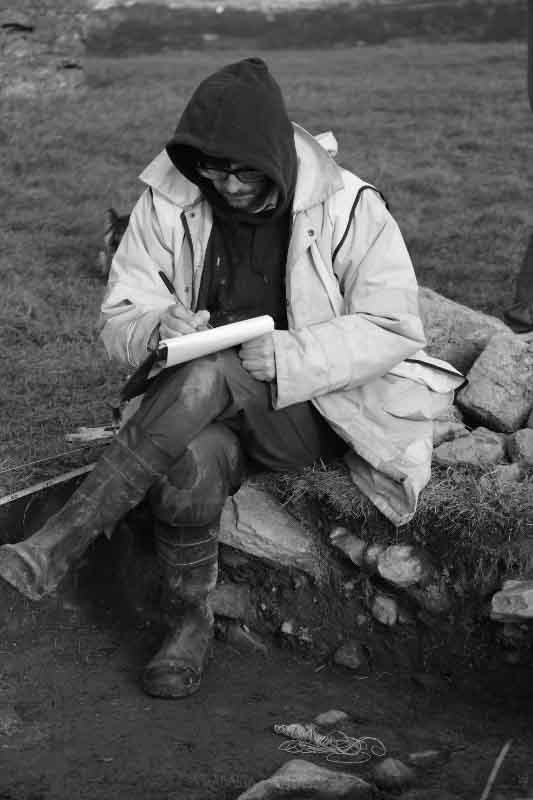
One of the most important parts of an archaeological dig is to record everything in detail with scale drawings & descriptions #HellfireClub pic.twitter.com/uoPaaq0ZKd
— Abarta Heritage (@AbartaGuides) October 6, 2016
We do drone photography every morning. A handy tool in modern archaeology, definitely beats a stepladder! #HellfireClub #irisharchaeology pic.twitter.com/AKnit6bb6Q
— Abarta Heritage (@AbartaGuides) October 26, 2016
Please Share This Story, Choose Your Platform!
Please continue to the next page for more information about the archaeological excavation strategy.
